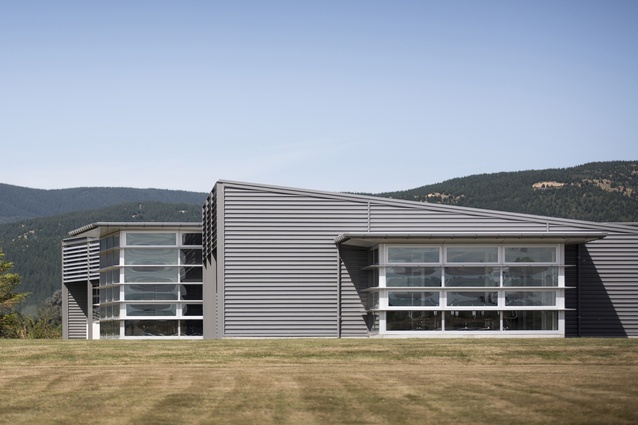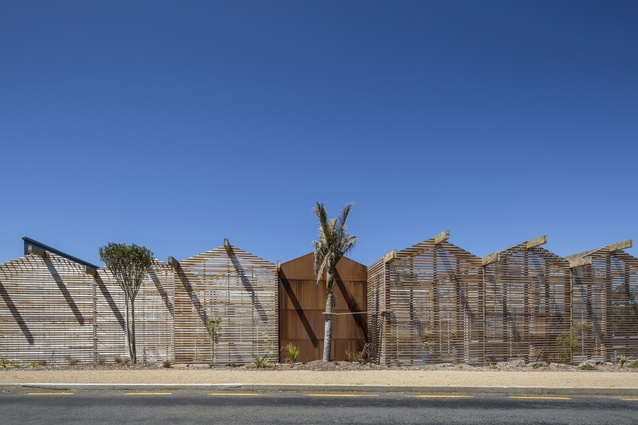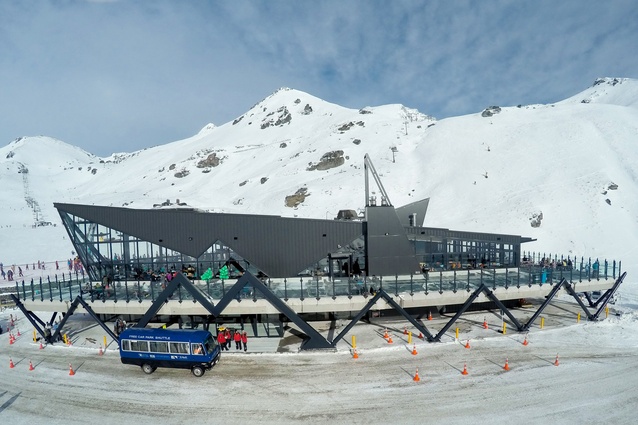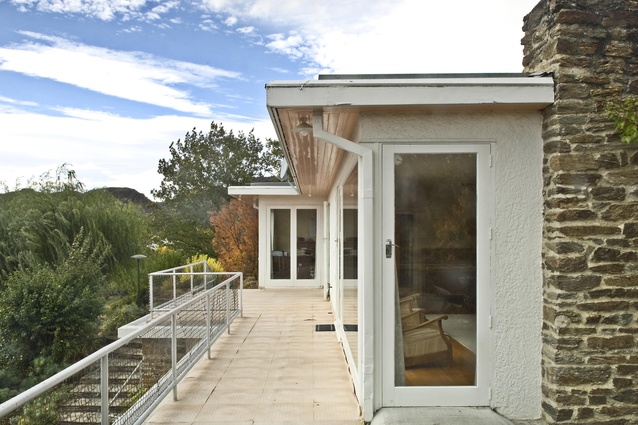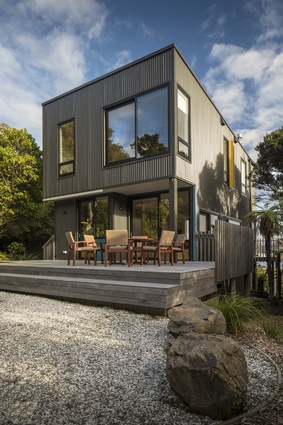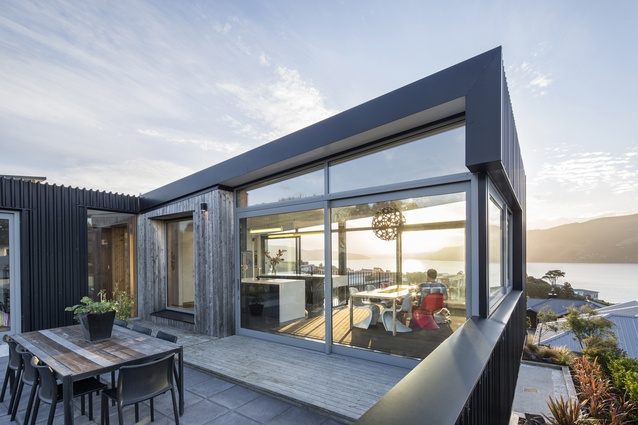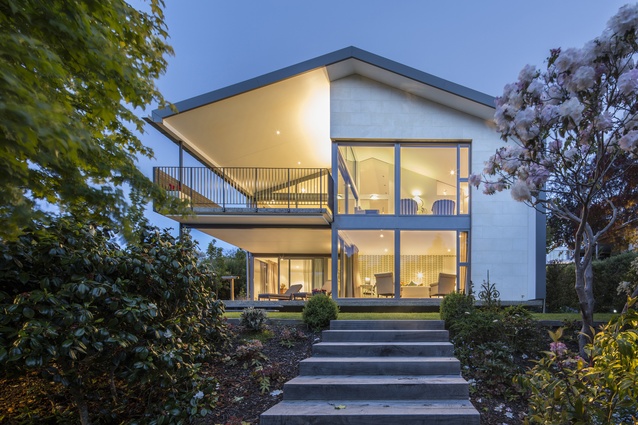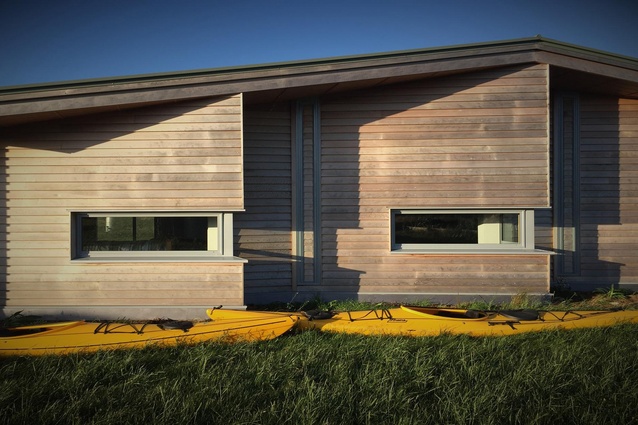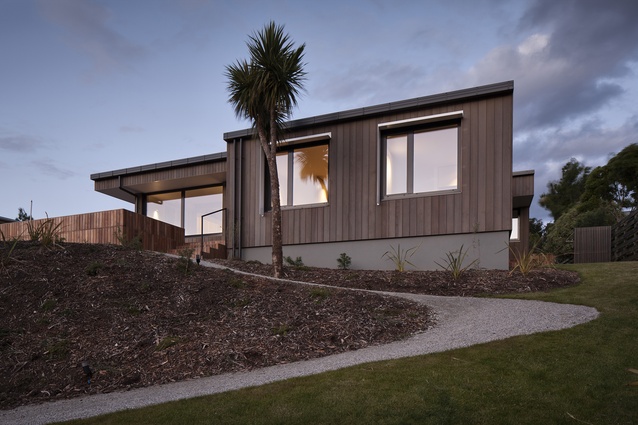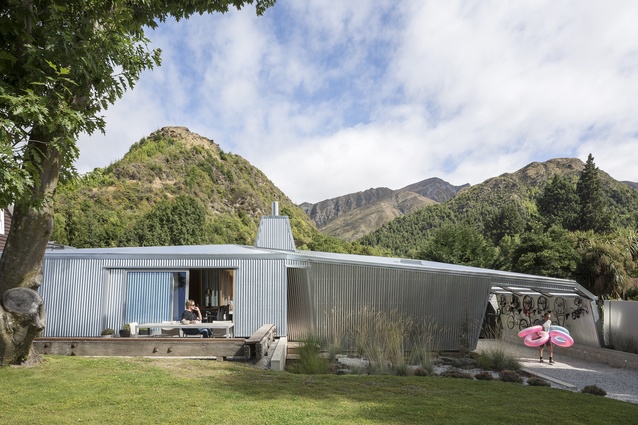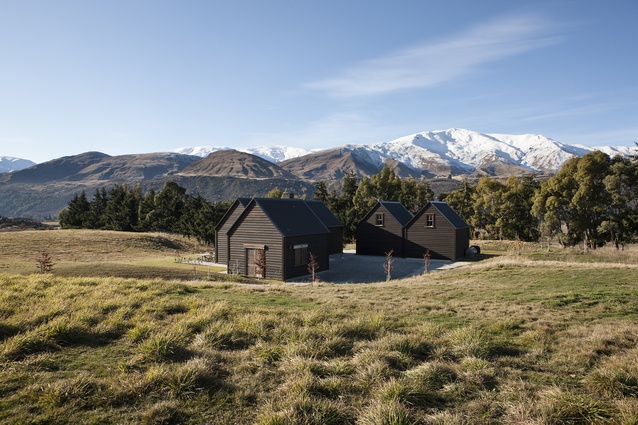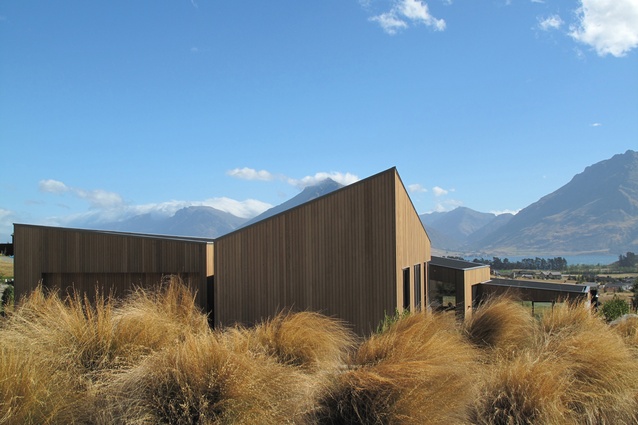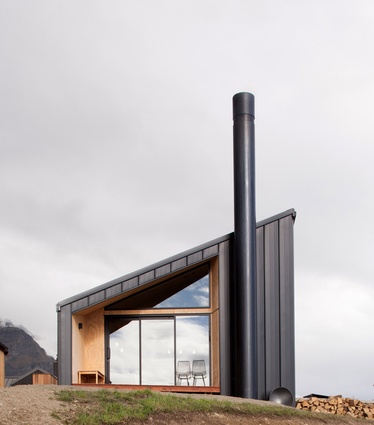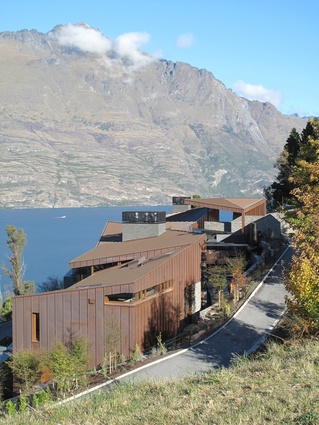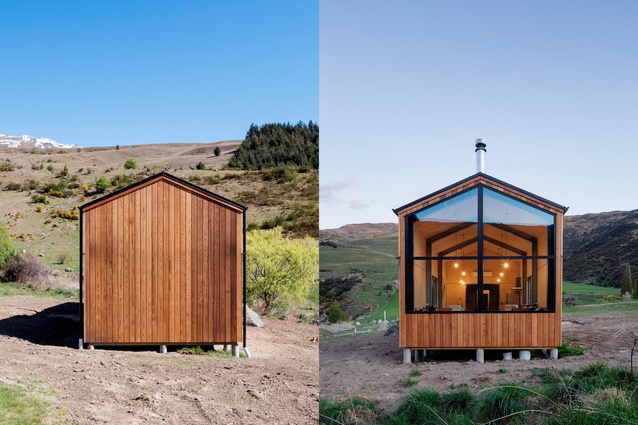2016 Southern Architecture Awards
Fifteen projects, ranging from an elegant, dramatic shed in the Remarkables mountain range to a small but perfectly proportioned Cardrona hut, were rewarded at the 2016 Southern Architecture Awards, announced at an evening at the Skyline in Queenstown on Saturday 28 May.
The quality of housing in the region was particularly strong, with 10 awards being conferred in this category. Another highlight was the Henderson House by Austrian émigré Ernst Pilschke, which was awarded the enduring architecture award. The famous home and artists retreat overlooks the Alexandra township and the Dunstan and Hawkdun mountains.
Wanaka architect Sarah Ritchie led the jury for 2016, and described the process of assessing each shortlisted project as an absolute delight. “Across great distances and through very different environments we allocated awards to projects that responded to respective client briefs and landscape conditions with consideration, composure and rigour – while also allowing poetry to unfold,” Ritchie said.
Full list of winners below with jury citations.
COMMERCIAL ARCHITECTURE AWARDS:
Calder Stewart Head Office Complex by Mason and Wales Architects
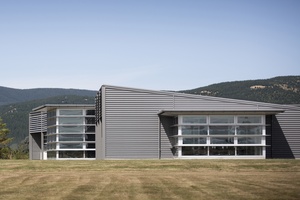
Set within a greenfield landscape, this large commercial building is accessed from the main state highway on the outskirts of the Milton township. In the plan of this building, one can see evidence of architect and client working closely together to create a functional and holistic office environment. The building’s formation is based around cellular ‘pods’, which will allow the company to easily expand, with minimal interruption to the existing base, when the time arises. The interior timber and limestone finishes are crisp and welcoming and the rural outlook provides a tranquil setting for the development. A commendation, also, for landscaping that comprises a sports fields and walking circuit, which encourage staff to head outside and get active.
Dunedin Botanic Garden – Plant Propagation & Nursery Facility by McCoy & Wixon Architects
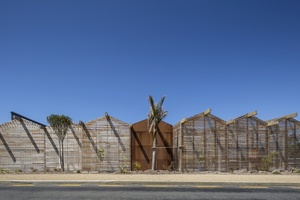
From the street this building appears mysterious. There’s no entry door; access gates provide the only entry, although tantalising glimpses of what lies behind are available through the façade. Once inside, you find a practical and playful response to a city-led commercial botanical brief. The overall structure consists of greenhouses, shed workspaces and a fence; however, through the clever and consistent use of materials the outcome rises above the purely functional and into the realm of the poetic. This inventive outcome introduces warmth and humanity to what could have simply been utilitarian.
The New Remarkables Base Amenities Building by Michael Wyatt Architect
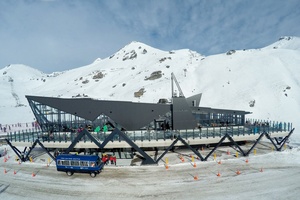
Set in the harshest of environments, this elegant shed is the workhorse of the mountain. To minimise the effects on the upper peaks the building is dug into the slope – a move that allows the top floor to open directly onto the snow. Other benefits of this seamless transition are a sunny aspect and fabulous northern views. The kitchen amenities are centrally located, with dining and resting areas broken into smaller volumes with varying characters. Left exposed, the structural steel support elements are suitably impressive for the loads they bear. With its triangular plan and soaring mono-pitched roof, this building presents itself as a dramatic and elegant wing to the mountains.
ENDURING ARCHITECTURE AWARD:
Henderson House – Artists Retreat (1950) by Ernst Plischke
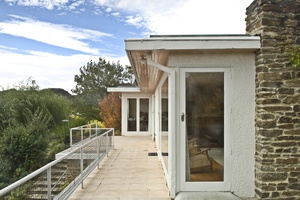
It was a great pleasure to receive access to the Henderson House in Alexandra – a home with a rebellious beginning, set on the ‘other side’ of the river. In the early 1950s, Ernst Plischke employed the region’s local stone for the strong, sculptural walls that would eventually contain a fabulously proportioned home overlooking the Alexandra Township and the beautiful Dunstan and Hawkdun mountain ranges. This award recognises the efforts of one of New Zealand’s most acclaimed architects. The Henderson House is valuable, not only in respect to its place in local history, but also within the arts community, where it currently plays a significant role as a residence for artists from all around New Zealand.
HOUSING AWARDS:
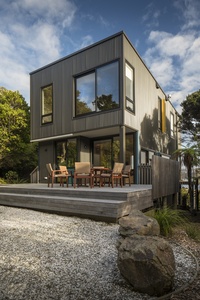
Stewart Island Crib by Tennent + Brown Architects
This playful and surprisingly spacious three-storey bach sits delicately poised on the hillside overlooking Patersons Inlet. It has been orientated to embrace views over the inlet to the south while nestling into the bush to the north, which creates a warm and protected environment. Within the crib, a simple colour palette and furnishings have been employed to great effect. The overall planning is skillful and sensible and creatively uses every inch of space. This is a place with an authentic holiday feel – a real delight.
Resene Colour Award:
A wonderful space with cheeky bursts of colour to both the interior and exterior that mimic the flashes of brightness of the native birds that occupy the surrounding bush.
Mission Cove Residence by McCoy & Wixon Architects
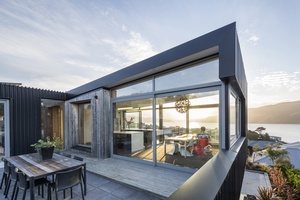
This vibrant family home, sited between farm and city, employs inventive planning so that the private aspect of the home overlooks pastureland, while the public areas open up to harbour views and sun. A timber-clad spine wall is the device that divides private from public, and within its depth is ample and discreet storage. Throughout the house, a commitment to fabrication and a commonality of design detailing and materials is evident. Texture and colour are addressed with consideration and the home is beautifully integrated into its landscape.
Māori Hill House by McCoy & Wixon Architects
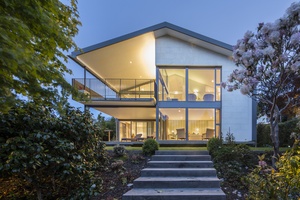
This secluded and deceptively simple haven shows respect to the surrounding community by scaling down as it approaches the street. The transitions in scale and volume are handled calmly and with great control, especially in the areas that expand out onto private green spaces. This beautifully finished house is a seemingly effortless outcome from a well-practiced architect.
Tumai by Architectural Ecology
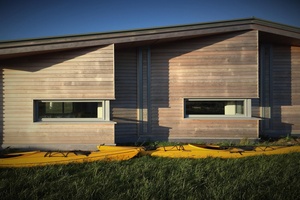
This house represents an artistic sculpting of architecture. It is a remarkable home, whose success is due to the combined visions and ideologies of client and architect. The building, set in a stunning landscape, sits softly on a hill. It is a beautiful composition but also a sensible one, as the form responds with elegance to the climate and setting. Under a roof reminiscent of an extended concertina, indented exterior walls play with light and shadow. Inside, gill-like windows frame stunning views in each room. Materials have been carefully selected for their sustainability and much thought and hard work has gone into re-establishing the landscape with planting. This rich and beautifully crafted project is a delight to the senses.
George House by Rafe Maclean Architect
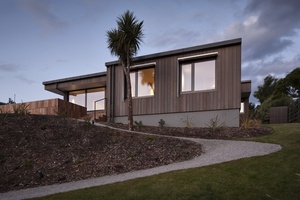
At first glance, this, the first certified Passive Home in the South Island, is a simple structure; however, closer examination reveals a residence that is altogether more sophisticated. Although it will become an excellent case study for the passive house typology, the George House is much more than just a test house. The architect’s carefully considered and assured design has led to a brilliant outcome. Rigorous research, calculations and calibrations will guarantee a warm, efficient and healthy environment for its occupants.
Hamilton Family Home by Bull O’Sullivan Architecture
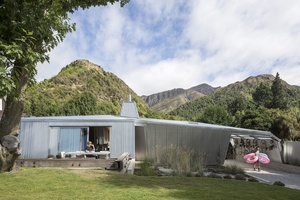
Inventive, challenging, playful – this is, put simply, a gorgeous home. Respectfully sited in a quiet Arrowtown neighbourhood, the house is sleek, low-slung and jewel-like. The interior is unassuming and comfortable, with four bedrooms compactly arranged and enclosed with soft curtains. This project shows a true commitment to innovation, excellence and vision. Total commitment from client, architect and builder, from conception to completion, has resulted in a magnificent outcome – a home full of joy.
Resene Colour Award:
Subtle soft colours that relax and soothe the senses are effortlessly combined with natural materials throughout the home.
Bendemeer Mountain Retreat by Bureaux
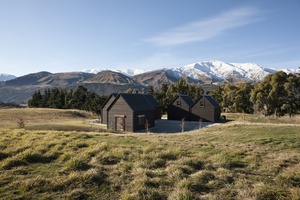
This project responds very clearly to the brief of clients moving between the city and a rural lifestyle in the south. The cluster of buildings is both texturally rich and very appropriate to the rural site. Although small in footprint, the generosity of the carefully controlled volumes provides flexibility in the ways the home can be occupied. There is a clever connection between public and private spaces, with the main bedroom opening directly – yet discreetly – off the living space. This is a beautifully appointed home.
Sargent Residence by Hyndman Taylor Architects
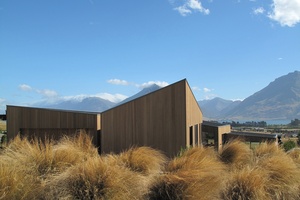
This home, the physical expression of a well-understood brief, responds particularly well to the constraints of the site. Within the building envelope diverse opportunities for occupation have been delivered. Despite the proximity of the neighbours, a level of privacy and shelter has been created that does not compromise any of the incredible views on offer. This house has character and personality, and is a very successful and intelligent response to new subdivision living.
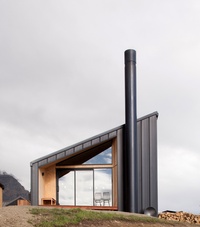
Tom’s House by Anna-Marie Chin Architects
Tom’s House is a playful collection of spaces arranged carefully within a tight envelope. It is also a very sculptural form of architecture, with new ways of living carved from the form of the house. As with the proverbial Tardis, there is the very real possibility here of discovering spaces inside that from a study of the exterior would seem impossible! Beautifully detailed with a simple palette, Tom’s House is a delight.
Copper House by Anna-Marie Chin Architects
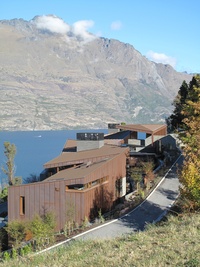
With its faceted planes and copper surfaces this house appears sculpted from the land. It is a home of discovery, texture and personality. Inside, the pared-back palette favours timber, which creates an atmosphere of warmth and softness that plays off against the stone that anchors the house to the hillside. Despite its size, this is a welcoming and luxurious house. The sculptural form of the exterior flows inside as spaces expand and contract, shifting and guiding you to new perspectives of the expansive views. Thoroughly well crafted, the Copper House is a celebration of light and form, and an illustration of the confident spatial mastery of the architect.
Resene Colour Award:
Splashes of vibrant colour play off an otherwise organic palette, creating playful moments and offering personality and punch.
SMALL PROJECT ARCHITECTURE AWARD:
Cardrona Hut by RTA Studio
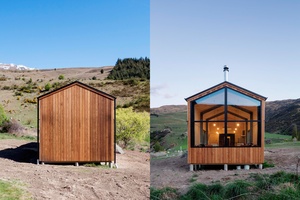
This is the HUT. Two pavilions connected by a sheltered core that can be opened up to the world or closed off for shelter, warmth and intimacy. The elegance and scale of the proportions are the work of an architect that understands the psychological benefits of going ‘small’ in an environment where mountains loom large all around. In this design, one can read a careful consideration of the things that are essential for a family – and no more. This hut, hovering gently on piles that just tiptoe across the landscape, is an ode to a simple way of living.
All winners of the 2016 Southern Architecture Awards are eligible for shortlisting in the New Zealand Architecture Awards, which will be decided later in the year, and announced in November.

